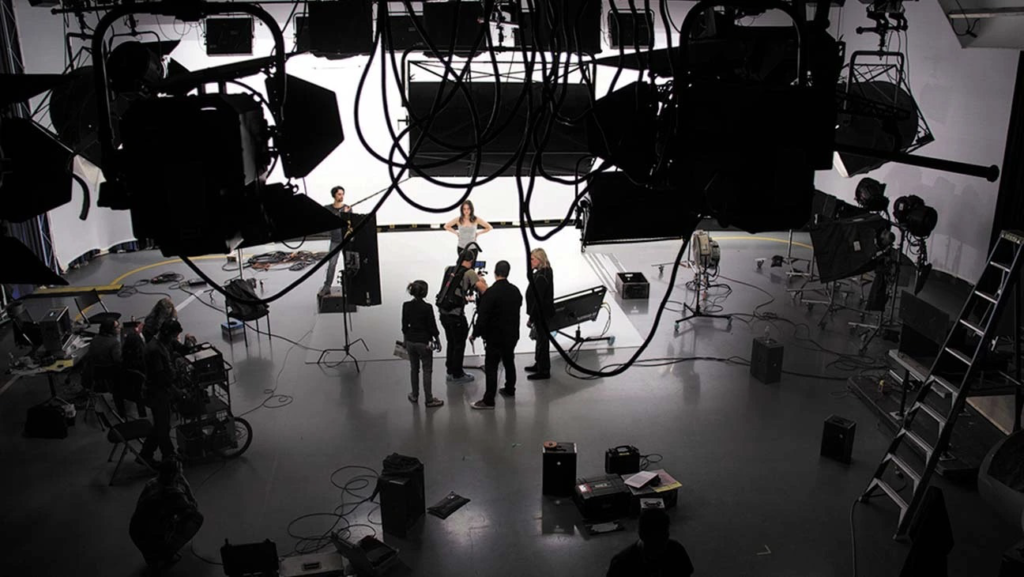White paper by Ace Salvador, Q3, 2023

In the rapidly evolving landscape of entertainment, where the streaming economy is not merely a trend but a seismic shift in content consumption, there emerges an urgent necessity for dedicated film academies. As Hollywood witnesses an unprecedented surge in film production and distribution through platforms like Netflix, Amazon Prime, and Disney+, there’s an ever-increasing demand for skilled professionals who can navigate both the artistic and technical intricacies of this digital era. Film academies, beyond being mere institutions of learning, are pivotal in molding the next generation of filmmakers and industry professionals, ensuring that they are equipped, not just to keep pace, but to innovate and lead in a film industry undergoing transformative growth. The Dominican Republic, a growing hub for film, and with an ample tax credit climate is one such place where the construction of a film academy would be paramount in training the next generation of filmmakers and crews to contribute to the insatiable, global demand for media.
Overview:
Film academies offer training for a wide variety of roles within the film industry. Depending on the academy, the depth and breadth of training can vary, but many institutions aim to cover a comprehensive range of disciplines. Here are some of the key positions that film academies often provide training for:
- Director: Responsible for overseeing the creative aspects of a film, including the performances of actors, choice of locations, pacing, and more.
- Screenwriter: Writes scripts for films. Training often includes story structure, character development, dialogue, and formatting.
- Producer: Manages the production of a film from conception to completion. Training might cover areas like budgeting, financing, hiring, and marketing.
- Cinematographer/Director of Photography (DP): Oversees the visual aspects of a film, determining how each scene is lit and shot.
- Editor: Cuts and arranges shots to create the final version of a film. Training covers techniques, software (like Adobe Premiere Pro, Final Cut Pro, Avid), and storytelling strategies.
- Sound Designer: Works on all aspects of sound, from on-set recording to post-production mixing and effects.
- Production Designer/Art Director: Responsible for the look and feel of the film, including sets, locations, props, and costumes.
- Costume Designer: Designs, sources, and sometimes creates the costumes worn by actors.
- Makeup and Hair Stylist: Applies makeup and creates hairstyles suitable for the characters in the film.
- Visual Effects (VFX) Artist: Creates digital effects that can’t be captured on set, from simple wire removals to complex CGI characters.
- Animator: Specializes in bringing animated characters and scenes to life, whether in full animated films or as part of live-action films with animated elements.
- Composer: Writes original music for films.
- First Assistant Director (1st AD): Assists the director by managing schedules, coordinating staff, and ensuring the filming process stays on track.
- Gaffer: Chief electrician on set, responsible for the design and execution of the lighting plan.
- Grip: Works closely with the gaffer to set up and maintain camera equipment and lighting rigs.
- Location Manager: Scouts and secures locations for filming.
- Script Supervisor: Ensures continuity in a film, keeping track of takes, positions, props, and more during shooting.
- Casting Director: Finds and selects actors suitable for roles in the film.
- Colorist: Enhances and corrects color in the post-production phase to achieve a desired look and feel.
Training students in specific disciplines at a film academy is essential to ensuring the film industry is supplied with a qualified, specialized, and competent labor force. The world of filmmaking is vast and complex, consisting of a multitude of distinct roles, each requiring a unique set of skills and knowledge. For instance, the skills required of a cinematographer, who crafts the visual imagery of a film, differ drastically from those of a sound designer or a screenplay writer. By focusing on specialized disciplines, a film academy ensures that students receive a deep and thorough education in their chosen field, equipping them to meet industry standards and excel in their roles. Without such specialized training, the industry could face a shortage of experts in key areas, leading to a potential decline in the quality of films produced. Moreover, having trained professionals ensures efficiency in the filmmaking process, adherence to budgets, and reduced time in post-production due to fewer errors during the shooting phase. In essence, a film academy’s role in honing specific disciplines is paramount for both the artistry and the economics of the film industry.
The establishment of a film academy in the Dominican Republic is not only pivotal for the cultural and artistic advancement of the nation but also a potential boon for its economy. As cinema becomes an increasingly powerful medium globally, the Dominican Republic, with its rich heritage and diverse landscapes, stands as an untapped reservoir of stories waiting to be told. Training the next generation of filmmakers in a dedicated academy would equip them with the tools and knowledge to narrate these stories compellingly and authentically. Beyond the cultural sphere, there’s an economic dimension to consider. By fostering a robust film industry, the Dominican Republic can attract international film projects, create thousands of jobs ranging from technical roles to acting positions, and boost tourism as moviegoers seek to visit filming locations. In essence, a film academy isn’t merely an educational institution; it’s an investment in the Dominican Republic’s future as a key player in global cinema and a catalyst for economic growth.
